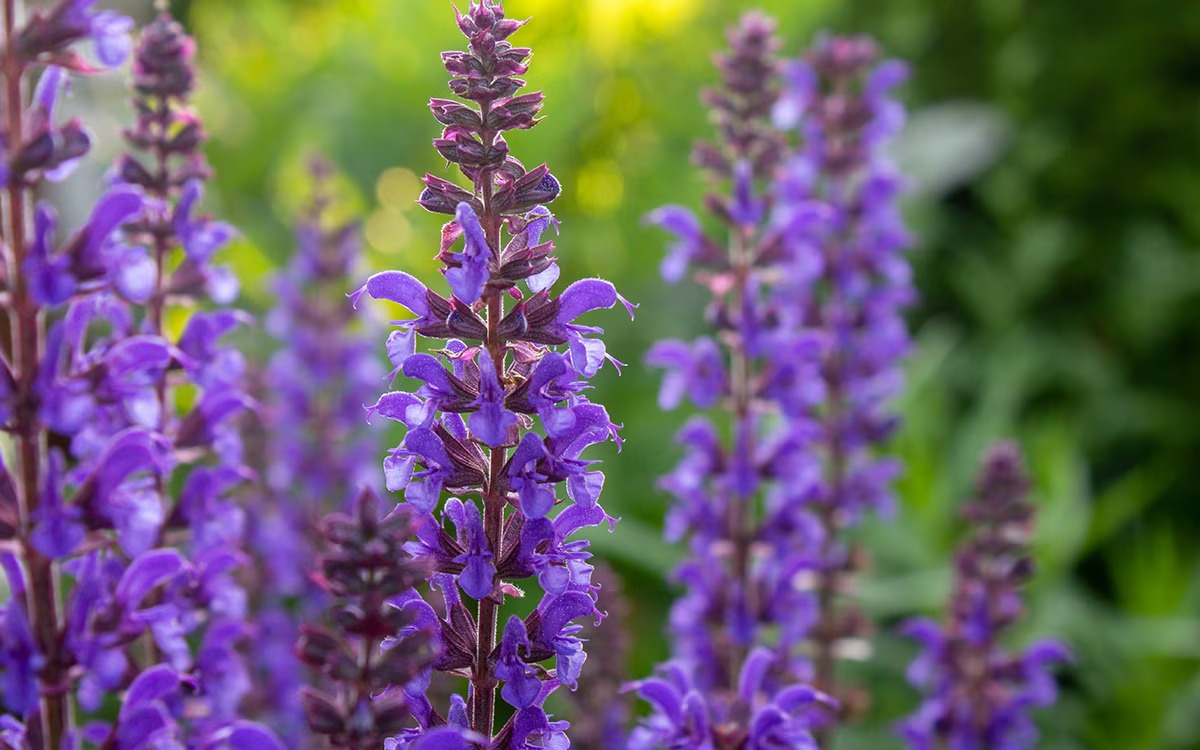
Salvia, often known as sage, is a fascinating plant with a rich history and diverse uses. From its role in traditional medicine to its place in modern gardens, this herb has much to offer. Did you know that Salvia belongs to the mint family? That’s right, it shares its lineage with other aromatic plants like basil and rosemary. This versatile herb isn't just for cooking; it has been used in rituals, as a natural remedy, and even in art. Whether you're a gardener, a chef, or just curious, these 25 facts about Salvia will surprise and inform you.
What is Salvia?
Salvia, also known as sage, is a genus of plants in the mint family. With over 900 species, it’s a diverse group with some fascinating characteristics. Here are some intriguing facts about this remarkable plant.
- Salvia is part of the Lamiaceae family, which includes other herbs like mint, basil, and rosemary.
- The name "Salvia" comes from the Latin word "salvare," meaning "to heal" or "to save."
- Salvia species are found all over the world, from Central and South America to Asia and the Mediterranean.
Historical Uses of Salvia
Salvia has been used for centuries for various purposes. Its historical significance is as rich as its diversity.
- Ancient Egyptians used Salvia for fertility and to treat various ailments.
- In ancient Rome, Salvia was considered a sacred herb and used in religious rituals.
- Native Americans used Salvia for medicinal purposes, including treating colds and digestive issues.
Medicinal Properties of Salvia
Salvia is not just a culinary herb; it has numerous medicinal properties that have been recognized for centuries.
- Salvia officinalis, commonly known as garden sage, has antimicrobial properties.
- Some Salvia species have been used to treat memory loss and Alzheimer's disease.
- Salvia miltiorrhiza, or red sage, is used in traditional Chinese medicine to improve blood circulation.
Culinary Uses of Salvia
Salvia is a popular herb in many cuisines around the world. Its unique flavor makes it a favorite in various dishes.
- Sage is a key ingredient in stuffing for Thanksgiving turkey.
- It is often used in Italian cuisine, especially in dishes like saltimbocca.
- Fresh sage leaves can be used to make a flavorful tea.
Salvia in the Garden
Salvia is not only useful but also beautiful, making it a popular choice for gardens.
- Many Salvia species are drought-tolerant, making them ideal for xeriscaping.
- Salvia flowers attract pollinators like bees, butterflies, and hummingbirds.
- Some Salvia species, like Salvia splendens, are grown for their vibrant flowers.
Unique Species of Salvia
With so many species, some Salvia plants stand out for their unique characteristics.
- Salvia divinorum, also known as Diviner's Sage, is known for its hallucinogenic properties.
- Salvia apiana, or white sage, is used in smudging rituals by Native Americans.
- Salvia leucantha, or Mexican bush sage, is known for its velvety purple flowers.
Environmental Benefits of Salvia
Salvia plants offer several environmental benefits, making them valuable beyond their aesthetic and culinary uses.
- Salvia plants can help prevent soil erosion due to their extensive root systems.
- They are often used in companion planting to repel pests and attract beneficial insects.
- Some Salvia species are used in phytoremediation to clean contaminated soils.
Cultural Significance of Salvia
Salvia has played a significant role in various cultures around the world.
- In Mexican culture, Salvia divinorum is used in shamanic rituals for spiritual healing.
- The ancient Greeks believed that Salvia could increase wisdom and longevity.
- In European folklore, sage was believed to protect against evil spirits.
Fun Facts About Salvia
Here are some fun and lesser-known facts about Salvia that might surprise you.
- The largest Salvia flower can grow up to 12 inches long, found in the species Salvia gesneriiflora.
Final Thoughts on Salvia
Salvia, often overlooked, holds a treasure trove of fascinating facts. From its ancient medicinal uses to its modern-day applications, this plant has a rich history. Known for its vibrant flowers and aromatic leaves, salvia isn't just a pretty face in the garden. It plays a crucial role in traditional medicine, offering benefits like anti-inflammatory properties and digestive aids.
Gardeners love salvia for its resilience and ability to attract pollinators. Its diverse species, ranging from the common sage to the psychedelic Salvia divinorum, showcase its versatility. Whether you're a gardening enthusiast or someone interested in herbal remedies, salvia has something to offer.
Understanding these facts can deepen your appreciation for this remarkable plant. Next time you see salvia, remember it's more than just a garden staple—it's a plant with a story.
Was this page helpful?
Our commitment to delivering trustworthy and engaging content is at the heart of what we do. Each fact on our site is contributed by real users like you, bringing a wealth of diverse insights and information. To ensure the highest standards of accuracy and reliability, our dedicated editors meticulously review each submission. This process guarantees that the facts we share are not only fascinating but also credible. Trust in our commitment to quality and authenticity as you explore and learn with us.


